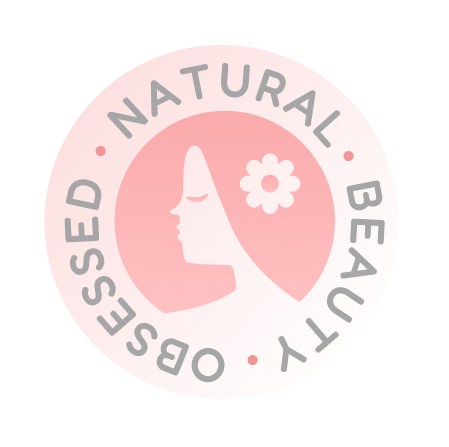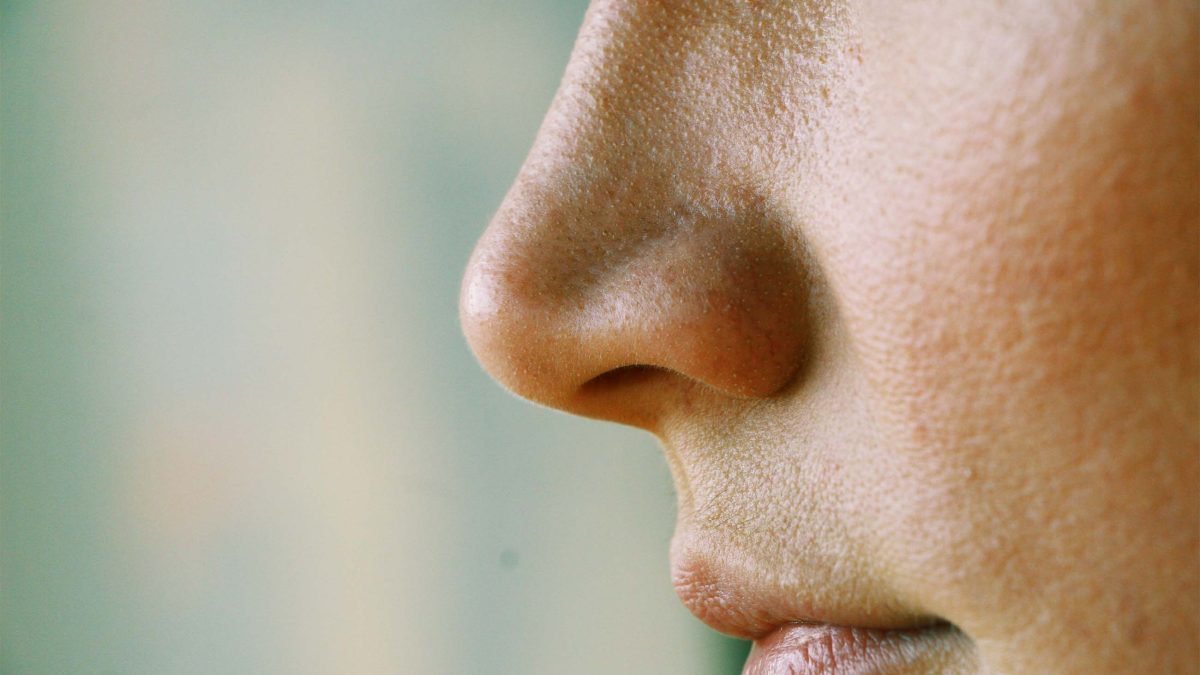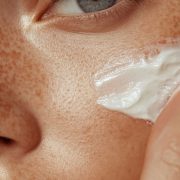Here’s How to Check
Posted on February 6, 2025 Written by: 100% PURE®

All too often mistaken for blackheads, sebaceous filaments are actually perfectly normal, and if you have them, you are absolutely not alone, and you have nothing to be concerned about.
However, the confusion surrounding sebaceous filaments has led most individuals to attempt to get rid of them in ineffective ways.
We’re here to dispel the differences between blackheads and sebaceous filaments, as well as how to properly manage them for happier, smaller-looking pores.
What are Sebaceous Filaments?
Sebaceous filaments are tiny, tube-like structures that are found naturally occurring in the skin. Like blackheads, they are a normal occurrence in the skin, and their purpose is to help modify oil flow.
Sebaceous filaments are formed when the pores fill up with oil, which then becomes those tiny dots you might notice across your nose and cheeks.
The oil produced by your skin and found in sebaceous filaments is what’s known as sebum, and it functions to moisturize and protect the skin.
Sebum is redirected from the skin’s glands and onto the surface through sebaceous filaments, where it then works to fight aggressors and pollutants from your environment.
But when there’s an overproduction of sebum in your pores, the oil can build up and begin to clog, consequently stretching out the pore until it becomes visible to the naked eye.
When they reach this state, it makes sense that many individuals mistake their sebaceous filaments for blackheads, as they can often look pretty similar.
So what are the differences between blackheads and sebaceous filaments, anyway?

How Are Sebaceous Filaments Different From Blackheads
The confusion between sebaceous filaments and blackheads is nothing new. Back in the 90s and early 2000s, skin-care was all about drying up the skin as much as possible. And along with many unfortunate products, this era popularized pore strips.
With products such as these, our aversion to both blackheads and sebaceous filaments as a society is apparent. However, it’s important to understand the differences between the two because they occur for different reasons, and require different means of treatment.
Let’s start with defining what blackheads are.
Blackheads are recognized as open hair follicles (or pores) that have been clogged with a mixture of sebum, dead skin cells, and pore buildup that has been oxidized, hence the term “blackhead.”
Blackheads are, in essence, a form of acne known as open comedones, which is often an early sign of acne in an individual. Typically, blackheads are characterized by a widened opening of a hair follicle caused by a clogging of sebum, but it can also occur due to Cut Bacterium acnes (C. acnes) bacteria and/or inflammation. Consequently, blackheads are considered to be a non-inflammatory form of acne, and they’re found around the face, neck, shoulders, arms, chest, and back.
Sebaceous filaments, on the other hand, are not clogged pores, and they are not problematic in any way. In fact, they’re not even classified as a form of acne, but instead considered a “normal” type of pore that has been filled up to the surface.
Do You Need to Remove Sebaceous Filaments?
So let’s answer the question: do you need to remove sebaceous filaments?
In short, no.
Sebaceous filaments are a naturally occurring, normal part of your skin, and as such, you cannot get rid of them. In fact, from a dermatological perspective, there is really no need to remove them.
However, there are some individuals who find their sebaceous filament uncomfortable, or they might not like the appearance of them.
So that begs the next question: even if you don’t have to get rid of your sebaceous filaments, can you?
In short, yes.
Let’s talk about how.

How to Reduce the Appearance of Sebaceous Filaments
Because they are essentially places where oil in your skin gathers, sebaceous filaments can be uncomfortable and visible, especially for those with oil skin and consistently large pores.
It’s worth noting that sebaceous filaments can actually be professionally extracted, however, the effects of removal are only temporary, and the sebum will eventually return.
Still, there are ways to shrink the appearance of sebaceous filaments in the long run, with consistent care. To reduce the appearance of enlarged sebaceous filaments, make sure to focus on skin care products that are formulated to manage oil production. While pore strips will provide very short-term effects, a good cleanser will help to reduce oil production, which can over time help reduce the appearance of pores. We especially recommend a good AHA cleanser or our for managing sebaceous filaments.
Keep in mind, though, that sebaceous filaments are natural, essential parts of your skin and cannot be completely removed.
It’s also helpful to avoid squeezing sebaceous filaments. Not only is this ineffective, but it may injure the skin and damage your pore, even making it bigger in the process.
Lifestyle and Daily Habits for Managing Sebaceous Filaments
While a good skincare routine is essential, your daily habits also play a significant role in managing sebaceous filaments. Simple lifestyle changes can help regulate oil production and maintain clearer, healthier skin.
Balanced Diet: Eating a diet low in sugar and processed foods can prevent excessive oil production, reducing the prominence of sebaceous filaments. Instead, opt for whole foods rich in vitamins and antioxidants to support skin health.
Hydration: Drinking enough water and using a lightweight, non-comedogenic moisturizer helps maintain skin balance, preventing your glands from overproducing oil to compensate for dryness.
Double Cleansing: Using an oil-based cleanser followed by a water-based cleanser effectively removes excess oil, dirt, and that can make sebaceous filaments more noticeable.
Sunscreen Use: Daily sun protection prevents UV damage, which can break down collagen and enlarge pores, making sebaceous filaments appear more prominent over time.
Proper Exfoliation: Gentle exfoliation with AHAs or BHAs helps clear away dead skin cells and excess oil, but over-exfoliating can strip the skin, leading to irritation and increased oil production.
100% PURE® Products for Managing Sebaceous Filaments
Incorporating the right skincare products into your routine can help regulate oil production and refine the appearance of sebaceous filaments. offers natural, effective solutions that cleanse, exfoliate, and without harsh chemicals.
: This gentle yet powerful exfoliator combines antioxidant-rich matcha with soothing oats to remove dead skin and excess oil while calming sensitive areas. Regular use promotes a smoother, more refined complexion.
: Formulated with detoxifying charcoal and kaolin clay, this cleanser deeply purifies pores, absorbing excess oil and drawing out impurities to prevent buildup and congestion.
Tea Tree & Willow Clarifying Astringent: Infused with antibacterial tea tree and anti-inflammatory willow bark extract, this refreshing astringent helps control excess oil, reduce shine, and soothe irritated skin for a clearer appearance.
: This natural, eco-friendly cleansing sponge is infused with activated charcoal to gently exfoliate, detoxify, and remove impurities, making it perfect for daily use without stripping the skin.
FAQs
Can sebaceous filaments turn into blackheads if not properly managed?
No, sebaceous filaments are not clogged pores and do not turn into blackheads. However, if excess oil, dead skin cells, and impurities accumulate, they can contribute to blackhead formation. Maintaining a consistent skincare routine that includes gentle cleansing and exfoliation can help keep pores clear and minimize the chances of blackheads developing.
What ingredients should I look for in skincare products to reduce the appearance of sebaceous filaments?
To manage sebaceous filaments effectively, look for ingredients that help regulate oil production and promote gentle exfoliation. AHAs (alpha hydroxy acids) and BHAs (beta hydroxy acids) help dissolve dead skin cells and prevent buildup, while niacinamide controls excess sebum and reduces pore visibility. Clay and charcoal-based products can also absorb oil and purify pores, helping to refine the skin’s texture over time.
Is there a permanent way to remove sebaceous filaments?
No, sebaceous filaments are a natural and essential part of the skin, and they will always be present. While professional extractions may temporarily remove them, they will naturally refill as part of your skin’s oil regulation process. The best approach is to manage their appearance with a consistent skincare routine that controls excess oil and keeps pores clean.
How do sebaceous filaments change with age or hormonal shifts?
Hormonal changes play a significant role in oil production, which affects the visibility of sebaceous filaments. During puberty, pregnancy, or menopause, hormone fluctuations can increase sebum production, making sebaceous filaments more noticeable. On the other hand, as the skin ages and oil production slows, they may become less prominent. Using oil-regulating skincare products can help manage these changes effectively.
Can wearing makeup contribute to enlarged sebaceous filaments?
Yes, heavy or pore-clogging (comedogenic) makeup can lead to excess oil buildup, making sebaceous filaments appear more pronounced. Makeup that isn’t properly removed at the end of the day can also contribute to congestion and enlarged pores. To prevent this, choose lightweight, non-comedogenic products and ensure you thoroughly cleanse your skin every night with a gentle yet effective cleanser.
Get Your Skin Glowing
Sebaceous filaments are completely normal and essential for healthy skin. While they cannot be removed, they can be managed with the right skincare routine, lifestyle habits, and targeted products.
By understanding the difference between sebaceous filaments and blackheads, you can make informed decisions about how to care for your skin without unnecessary or damaging treatments.




